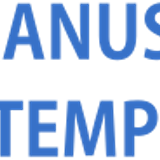INVESTIGATION OF THE RISKS OF INTRODUCING PRODUCED WATER INTO FRESHWATER INJECTION SYSTEM
Abstract
Mixing of waters from different sources may exacerbate the risk of formation damage and can impact on oil recovery. A case study is presented to demonstrate how to assess these risks. The study relies on laboratory-based work. Appropriate materials, methods, and procedures to assure the quality of test data and derive technically valid risks potential interpretations are discussed. The risks for potential plugging, scaling, permeability reduction, and oil recovery loss caused by introducing produced water are identified. Plugging is caused by bacterial growth and solid particles present in produced water. Bacterial growth is categorized as high. Solids Concentration is also high with its mean diameter larger than the non-damaging particle size. The CaCO3 scale is likely at reservoir temperature due to high concentration of HCO-3 in the produced water. Mixing of untreated produced water and treated freshwater caused signifi- cantly reduction in permeability. For the 25% PW and 75% FW mix, the permeability decreases by about 80% of its initial permeability. Adding 2000 ppm of biocide and fi ltered using 11 micron filter paper improved the quality of produced water. For the same mixing fraction, the permeability decreases only 47%. Analysis of pore throat size in conjunction with particle size of water samples suggests the need for using a fi lter less than 11 micron to avoid permeability decline imposed by solid particles. Waterflood experiments showed an ultimate recovery factor of 46.1% of original oil in place obtained from freshwater injection. Introducing 50% of produced water caused an oil recovery loss of 16% compared to freshwater injection alone. This lost oil recovery represents a quantitative effect of formation damage on oil production and may be valuable from the economic viewpoint.
Keywords
Full Text:
PDFReferences
Arthur, J.D., Langhus, B.G., and Patel, C., 2005. “Technical Summary of Oil & Gas Produced Water Treatment Technologies”, All Consulting, LLC, Tulsa, Oklahoma, USA.
Ba-Taweel, M.A., Al-Anazi, H.A., Al-Otaibi, M., Abitrabi Balian, A.N., and Hilab, V.V., 2006. “Core Flood Study of Injectivity Decline by Mixing Produced Oily Water with Seawater in Arab-D Reservoir”, The
SPE Technical Symposium of Saudi Arabia Section – 106356, Dhahran, Saudi Arabia.
Bedrikovetsky, P., Mackay, E., Monteiro, R.P., Patricio, F., and Rosario, F.F., 2006. “Injectivity Impairment due to Sulfate Scaling during PWRI: Analytical Model”, The SPE International Oilfield Scale Symposium - 100512, Aberdeen, Canada.
Evans, R.C., 1994. “Developments in Environmental Protection Related to Produced Water Treatments and Disposal (Produced Water Re-Injection)”, The SPE Health, Safety, and Environmental in Oil and Gas Exploration and Production Conference - 27179, Jakarta, Indonesia.
Lappan, R.E. and Fogler, H.S., 1996. “Reduction of Porous Media Permeability from In Situ Leuconostoc Mesenteroides Groeth and Dextran Production”, Biotechnology and Bioengineering, Volume 50 (1996), pp. 6-15.
Mackay, E.J., 2007. “Limiting Scale Risk at Production Wells by Management of PWRI Wells”, The SPE International Symposium on Oilfi eld Chemistry – 96741, Houston, Texas, USA.
Mahmoud, M.A., 2014. “Evaluating the Damage Caused by Calcium Sulfate Scale Precipitation During Low- and High-Salinity-Water Injection”, Journal of Canadian Petroleum Technology, Volume 53, No. 3, pp. 141-150.
Ochi, J., Rivet, P., Benquet, J.C., and Detienne, L.D., 2007. “Internal Formation Damage Properties and Oil-Deposition Profi le within Reservoir during PWRI Operations”, The European Formation Damage Conference – 108010, Scheveningen Netherlands.
Zuluaga, E., Evans, P., Nesom, P., Spratt, T., and Daniels, E., 2011. “Technical Evaluations to Support the Decision to Reinject Produced Water”, SPE Production and Operation, Volume 26, No. 2, pp. 128-139.
DOI: https://doi.org/10.29017/SCOG.38.1.537

This work is licensed under a Creative Commons Attribution-NonCommercial-NoDerivatives 4.0 International License.






